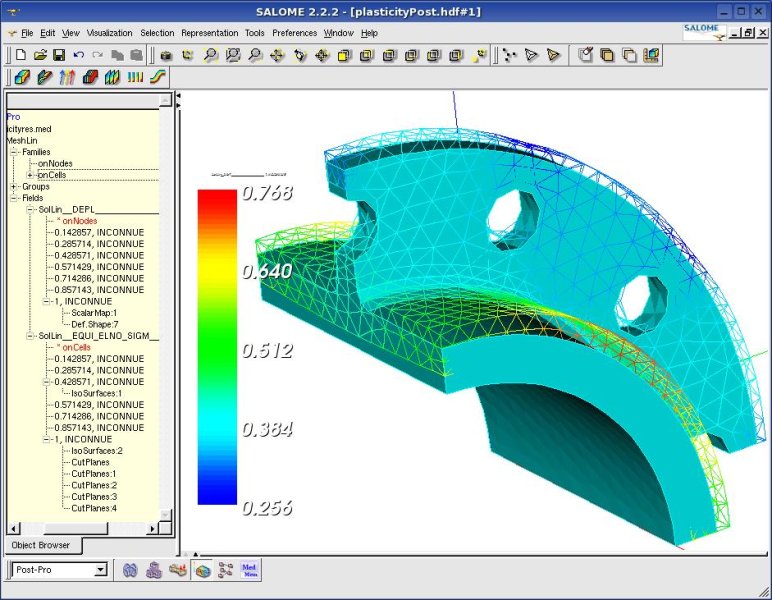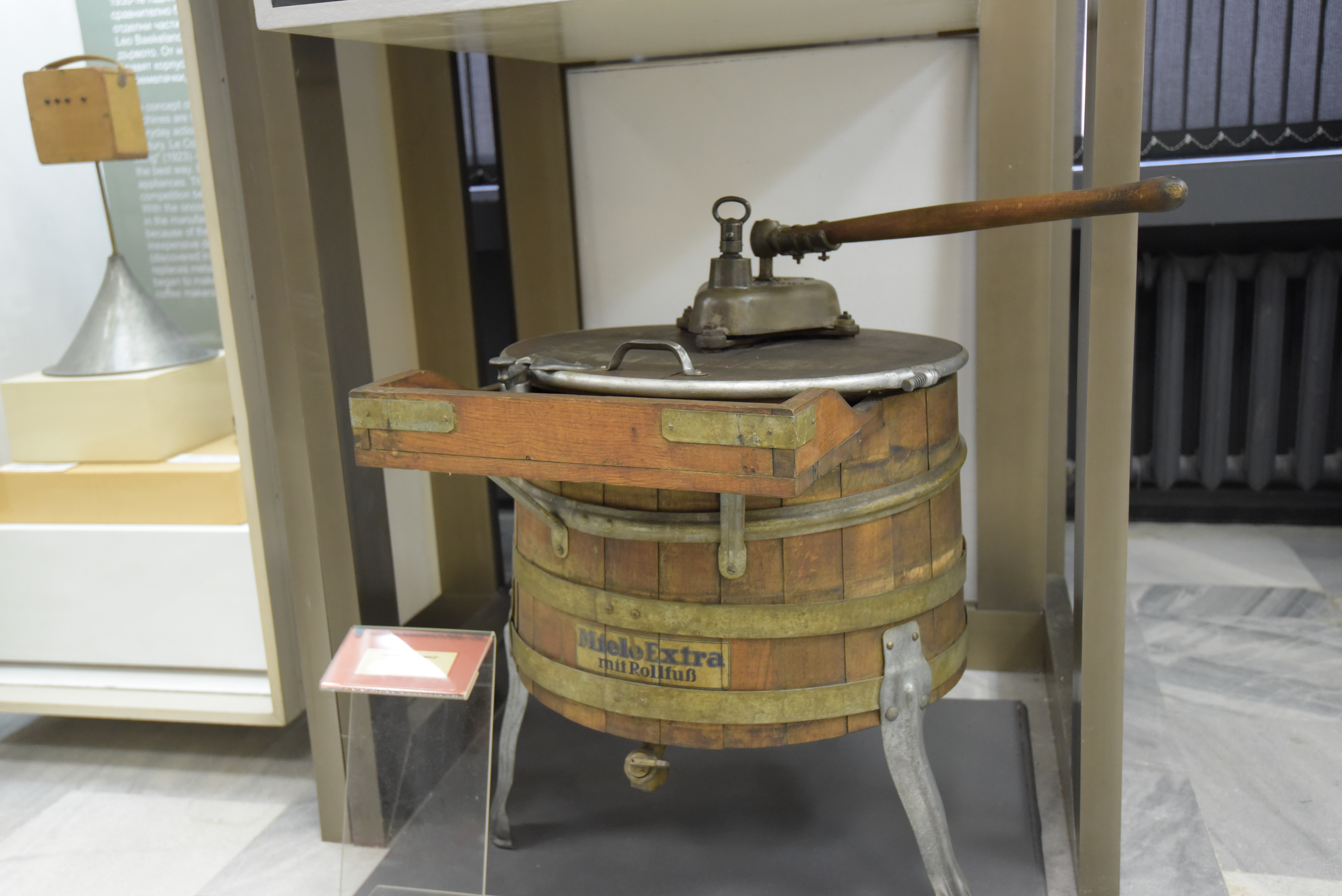|
Virtual Prototypes
Virtual prototyping is a method in the process of product development. It involves using computer-aided design (CAD), computer-automated design (CAutoD) and computer-aided engineering (CAE) software to validate a design before committing to making a physical prototype. This is done by creating (usually 3D) computer generated geometrical shapes (parts) and either combining them into an "assembly" and testing different mechanical motions, fit and function. The assembly or individual parts could be opened in CAE software to simulate the behavior of the product in the real world. Background The product design and development process used to rely primarily on engineers' experience and judgment in producing an initial concept design. A physical prototype was then constructed and tested in order to evaluate its performance. Without any way to evaluate its performance in advance, the initial prototype was highly unlikely to meet expectations. Engineers usually had to re-design the initial co ... [...More Info...] [...Related Items...] OR: [Wikipedia] [Google] [Baidu] |
Computer-aided Design
Computer-aided design (CAD) is the use of computers (or ) to aid in the creation, modification, analysis, or optimization of a design. This software is used to increase the productivity of the designer, improve the quality of design, improve communications through documentation, and to create a database for manufacturing. Designs made through CAD software are helpful in protecting products and inventions when used in patent applications. CAD output is often in the form of electronic files for print, machining, or other manufacturing operations. The terms computer-aided drafting (CAD) and computer aided design and drafting (CADD) are also used. Its use in designing electronic systems is known as '' electronic design automation'' (''EDA''). In mechanical design it is known as ''mechanical design automation'' (''MDA''), which includes the process of creating a technical drawing with the use of computer software. CAD software for mechanical design uses either vector-based graphics ... [...More Info...] [...Related Items...] OR: [Wikipedia] [Google] [Baidu] |
Computer-automated Design
Design Automation usually refers to electronic design automation, or Design Automation which is a Product Configurator. Extending Computer-Aided Design (CAD), automated design and Computer-Automated Design (CAutoD) are more concerned with a broader range of applications, such as automotive engineering, civil engineering, composite material design, control engineering, dynamic system identification and optimization, financial systems, industrial equipment, mechatronic systems, steel construction, structural optimisation, and the invention of novel systems. The concept of CAutoD perhaps first appeared in 1963, in the IBM Journal of Research and Development, where a computer program was written. # to search for logic circuits having certain constraints on hardware design # to evaluate these logics in terms of their discriminating ability over samples of the character set they are expected to recognize. More recently, traditional CAD simulation is seen to be transformed to CAutoD ... [...More Info...] [...Related Items...] OR: [Wikipedia] [Google] [Baidu] |
Computer-aided Engineering
Computer-aided engineering (CAE) is the broad usage of computer software to aid in engineering analysis tasks. It includes , , , durability and optimization. It is included with computer-aided design (CAD) and computer-aided manufacturing (CAM) in the collective abbreviation " CAx". Overview Computer-aided engineering primarily uses computer-aided design (CAD) software, which are sometimes called CAE tools. CAE tools are used, to analyze the robustness and performance of components and assemblies. CAE tools encompass simulation, validation, and optimization of products and manufacturing tools. CAE systems aim to be major providers of information to help support design teams in decision-making. Computer-aided engineering is used in various fields, like automotive, aviation, space, and shipbuilding industries. CAE systems can provide support to businesses. This is achieved by the use of reference architectures and their ability to place information views on the business proc ... [...More Info...] [...Related Items...] OR: [Wikipedia] [Google] [Baidu] |
Prototype
A prototype is an early sample, model, or release of a product built to test a concept or process. It is a term used in a variety of contexts, including semantics, design, electronics, and Software prototyping, software programming. A prototype is generally used to evaluate a new design to enhance precision by system analysts and users. Prototyping serves to provide specifications for a real, working system rather than a theoretical one. In some design workflow models, creating a prototype (a process sometimes called materialization) is the step between the Formal specification, formalization and the evaluation of an idea. A prototype can also mean a typical example of something such as in the use of the derivation 'prototypical'. This is a useful term in identifying objects, behaviours and concepts which are considered the accepted norm and is analogous with terms such as stereotypes and archetypes. The word ''wikt:prototype, prototype'' derives from the Greek language, Greek ... [...More Info...] [...Related Items...] OR: [Wikipedia] [Google] [Baidu] |
Fisker Automotive
Fisker Automotive was an American company known for producing the Fisker Karma, which was one of the world's first production luxury plug-in hybrid electric vehicles. It debuted at the 2008 North American International Auto Show, and first deliveries were in 2011. Production of the Fisker Karma was suspended in November 2012 due to bankruptcy of its battery supplier A123 Systems, with about 2,450 Karmas built since 2011 and over 2,000 cars sold worldwide. In February 2014, Fisker Automotive's Karma vehicle design, tooling and a manufacturing facility in Delaware were purchased by Chinese auto parts conglomerate Wanxiang Group. In 2016. Wanxiang would rename the holding company for the assets of Fisker Automotive to Karma Automotive. Henrik Fisker, the founder, former chairman, former CEO, of Fisker Automotive, retained the Fisker trademark and the Fisker logo, and launched a new, separate company called Fisker Inc.Paul A. Eisenstein"Tesla's Rival is Back: Fisker Launches All-Ne ... [...More Info...] [...Related Items...] OR: [Wikipedia] [Google] [Baidu] |
Federal Motor Vehicle Safety Standards
The Federal Motor Vehicle Safety Standards (FMVSS) are U.S. federal vehicle regulations specifying design, construction, performance, and durability requirements for motor vehicles and regulated automobile safety-related components, systems, and design features. They are the U.S. counterpart to the UN Regulations developed by the World Forum for Harmonization of Vehicle Regulations and recognized to varying degree by most countries except the United States. Canada has a system of analogous rules called the Canada Motor Vehicle Safety Standards (CMVSS), which overlap substantially but not completely in content and structure with the FMVSS. The FMVSS/CMVSS requirements differ significantly from the international UN requirements, so private import of foreign vehicles not originally manufactured to North American specifications is difficult or impossible. Structure FMVSS are currently codified in Title 49 of the Code of Federal Regulations, Part 571, Subpart B (), with each FMVSS sta ... [...More Info...] [...Related Items...] OR: [Wikipedia] [Google] [Baidu] |
Agilent Technologies
Agilent Technologies, Inc. is an American life sciences company that provides instruments, software, services, and consumables for the entire laboratory workflow. Its global headquarters is located in Santa Clara, California. Agilent was established in 1999 as a spin-off from Hewlett-Packard. The resulting IPO of Agilent stock was the largest in the history of Silicon Valley at the time. Agilent focuses its products and services on six markets: food, environmental and forensics, pharmaceutical, diagnostics, chemicals and advanced materials, and research. From 1999 to 2014, the company also produced test and measurement equipment for electronics; that division was spun off to form Keysight. Products and services Agilent serves analytical laboratories and the clinical and routine diagnostics markets with a full suite of technology platforms. These include: automation, bioreagents, FISH probes, gas and liquid chromatography, immunohistochemistry, informatics, mass spectrometry ... [...More Info...] [...Related Items...] OR: [Wikipedia] [Google] [Baidu] |
Oscilloscope
An oscilloscope (informally a scope) is a type of electronic test instrument that graphically displays varying electrical voltages as a two-dimensional plot of one or more signals as a function of time. The main purposes are to display repetitive or single waveforms on the screen that would otherwise occur too briefly to be perceived by the human eye. The displayed waveform can then be analyzed for properties such as amplitude, frequency, rise time, time interval, distortion, and others. Originally, calculation of these values required manually measuring the waveform against the scales built into the screen of the instrument. Modern digital instruments may calculate and display these properties directly. Oscilloscopes are used in the sciences, medicine, engineering, automotive and the telecommunications industry. General-purpose instruments are used for maintenance of electronic equipment and laboratory work. Special-purpose oscilloscopes may be used to analyze an automotive ign ... [...More Info...] [...Related Items...] OR: [Wikipedia] [Google] [Baidu] |
Miele
Miele ( ; ) is a German manufacturer of high-end domestic appliances and commercial equipment, headquartered in Gütersloh, Ostwestfalen-Lippe. The company was founded in 1899 by Carl Miele and Reinhard Zinkann, and has always been a family-owned and family-run company. History Miele's first products were a cream separator, butter churn, and tub washing machine, under the ''Meteor'' brand. Carl Miele supervised manufacturing personally, and Reinhard Zinkann apprenticed and handled finances and sales. In 1927, Miele started the production of vacuum cleaners. In 1929, the first electric dishwasher in Europe was produced. From 1930, motorcycles were built. In 1932, Miele was the largest centrifuge factory in Europe. During World War II, Miele produced control units for torpedoes of the German Kriegsmarine. :de:Miele The Miele trademark was established with the foundation of Miele & Cie. company, on 1 July 1899, and appeared on all machines, nameplates, printed materials and adver ... [...More Info...] [...Related Items...] OR: [Wikipedia] [Google] [Baidu] |
Design Cycle
A decision cycle is a sequence of steps used by an entity on a repeated basis to reach and implement decisions and to learn from the results. The "decision cycle" phrase has a history of use to broadly categorize various methods of making decisions, going upstream to the need, downstream to the outcomes, and cycling around to connect the outcomes to the needs. Overview A decision cycle is said to occur when an explicitly specified decision model is used to guide a decision and then the outcomes of that decision are assessed against the need for the decision. This cycle includes specification of desired results (the decision need), tracking of outcomes, and assessment of outcomes against the desired results. Examples of decision cycles * In quality control, PDCA (Plan–Do–Check–Act) is used. * In science, the scientific method (Observation–Hypothesis–Experiment–Evaluation) can also be seen as a decision cycle. * In the United States Armed Forces, a theory of an OODA l ... [...More Info...] [...Related Items...] OR: [Wikipedia] [Google] [Baidu] |
Crash Simulation
A crash simulation is a virtual recreation of a destructive crash test of a car or a highway guard rail system using a computer simulation in order to examine the level of safety of the car and its occupants. Crash simulations are used by automakers during computer-aided engineering (CAE) analysis for crashworthiness in the computer-aided design (CAD) process of modelling new cars. During a crash simulation, the kinetic energy, or energy of motion, that a vehicle has before the impact is transformed into deformation energy, mostly by plastic deformation ( plasticity) of the car body material (Body in White), at the end of the impact. Data obtained from a crash simulation indicate the capability of the car body or guard rail structure to protect the vehicle occupants during a collision (and also pedestrians hit by a car) against injury. Important results are the deformations (for example, steering wheel intrusions) of the occupant space (driver, passengers) and the decelerations ... [...More Info...] [...Related Items...] OR: [Wikipedia] [Google] [Baidu] |




.jpeg/1200px-Space_Aggressors_test_Red_Flag_Airmen_(2743147).jpeg)

